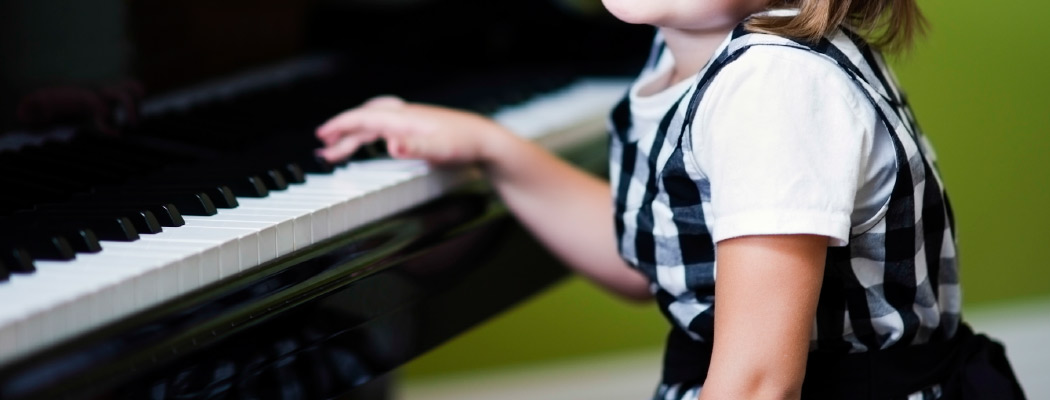Piano Adventures® has set a new standard for a new century of piano teaching. It has fast become the method of choice at leading university pedagogy programs and major teaching studios around the world. But more importantly, Piano Adventures® is bringing smiles to the faces of thousands of piano students. It can do the same for your students. Here’s why:
1. Approach to Reading
Every teacher has experienced the frustration of students who have difficulty reading music. Have you heard students perpetually ask, ‘What hand position am I in?’ Perhaps you’ve heard a concerned parent remark, ‘But she still doesn’t know her notes!’ Piano Adventures® has established the new model for piano methods with its composite approach to note reading. The ability to read music is developed by effectively integrating three skills: 1) discreet note recognition, 2) intervallic reading, and 3) a multi-key understanding. These are carefully sequenced and reinforced to ensure success.
Students begin by learning a limited set of notes — the notes of Middle C Position — yet they play these notes with varied fingerings. For example, the student plays Middle C with finger 1, finger 2, and then with finger 3. As the student learns Treble G (the next in a series of important ‘Guide Notes’ — Middle C, Treble G, Bass F), the piece requires the student to play finger 3 on G, and then 5 on G. Similarly, varied fingering is used for Bass F and other notes presented. This pedagogy has several important benefits:
- It prevents the student from equating a particular note to a particular finger.
- It teaches the precise relationship between a note and the keyboard.
- It allows for a free and balanced drop of the arm and hand into the finger.
- It avoids the overuse of two thumbs on C.
- It reduces the student’s dependence on preset hand positions.
- The notes of Middle C position include all seven tones of the major scale, allowing the student to play numerous familiar melodies from the PreTime® Piano (primer level) and PlayTime® Piano (Level 1) series.
- The fingering for the first note in either hand of a piece asks ‘3 on ___?’ This requires the student to identify the note name, to write it on the blank, then to set the hand according to the note and finger number given. The student learns the fundamental procedure of music reading and becomes self-sufficient in this process. No longer will the teacher be plagued by the student asking, ‘What hand position?’
Concurrent with individual note reading, the student is required to read by the contour of the musical line — step or skip? Up or down? This intervallic reading approach promotes fluency, recognition of melodic pattern, and understanding of the musical line.
At Level 2A, with the student firmly grounded in note reading, a multi-key approach is taken. Here the student learns the major and minor 5-finger patterns in C, G, D, and A. Not so many as to overwhelm the student’s reading or to become tedious, but enough to grasp transposition and basic chord recognition. (The student is encouraged to learn all 12 major and minor 5-finger positions in exercise format.) Minor is included early to tantalise the ear and to offer appealing sounds. At level 2B, the complete major scale is introduced along with key signatures and primary chords in the keys of C, G, and F.
2. Pianistic Music
A hallmark of Faber and Faber is pianistic arranging. The music of Piano Adventures® is specifically written (or arranged) for the piano. The pieces feel right at the piano.
- The pieces sound right at the piano.
- The pieces make easy and effective use of the damper pedal, opening up the rich sonority of the instrument.
- The pieces incorporate essential pianistic gestures — the motions and phrases that are integral to playing the piano.
- Pianistic pieces develop fluent piano technique. The pieces are written to encourage freedom at the keyboard, to promote a relaxed wrist, and to suggest gestures that carry the hand across the full range of the instrument.
3. Artistic Music
The music of Piano Adventures® is eminently musical. A method can only be as good as its music, and the music of Piano Adventures® shines. The course dovetails technique and artistry so the teacher may bring out maximum expression in the student’s playing. Parents notice the musicality; students thrive on the musicality; and you the teacher will appreciate the musicality. The Technique & Artistry books in Piano Adventures® ¨ are groundbreaking and unparalleled in teaching technical gesture for artistic playing. The ‘Technique Secrets’ and exercises deliver the pianistic tools to play with ease and expression. The ‘Artistry Hint’ and ‘Artistry Piece’ that conclude each unit bring student awareness of sound and musicality to new heights.
4. Student Appeal
Students are attracted to the pieces and sounds of Piano Adventures®. Ten years of painstaking pilot testing has ensured that the method has student appeal. Literally a hundred pieces that did not pass the test of student enthusiasm were discarded and replaced until the method met the standard and musical taste of the piano student and teacher. The tremendous appeal of the music as published has been confirmed by the hundreds of letters and comments from teachers and students across the world.
5. A Supplementary Library that Motivates Practice
The PreTime® to BigTime® Piano Supplementary Library correlates with Piano Adventures® to provide a broad selection of music to meet each individual student’s interest, at the precise level of difficulty. With styles that include Popular, Rock ‘n Roll, Classics, Jazz & Blues, Ragtime & Marches, Children’s Songs, Favorites, Hymns, and More Popular, the teacher can choose the style that motivates the student, and be assured that it is arranged to meet the pedagogical demands of the level. PreTime® to BigTime® offers the right fit between student interest and student repertoire.

